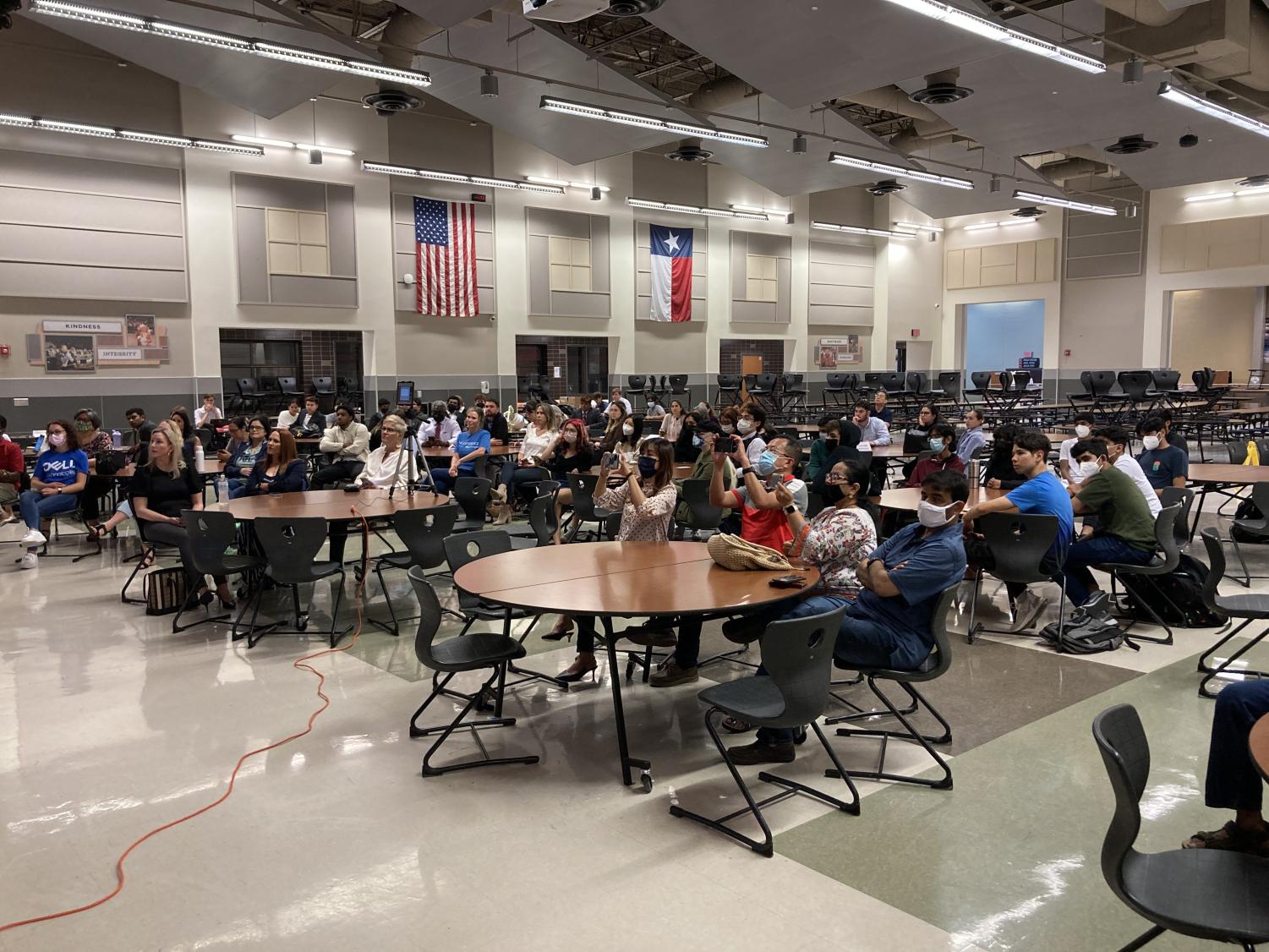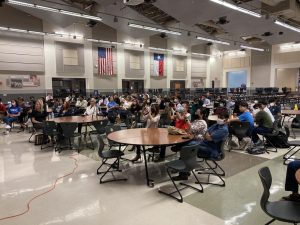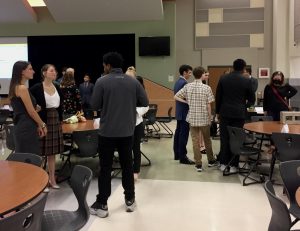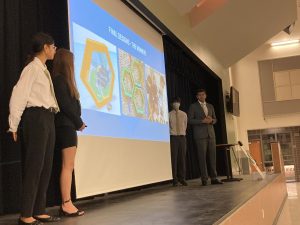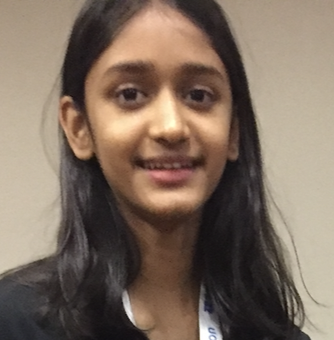Engineering Students Present Final Projects
April 27, 2022
On Thursday, April 21 and Friday, April 22, from 4:30 to 7:30 p.m., engineering students hosted their final project presentations for the graduating class of seniors, with seven groups presenting on Thursday, and five on Friday. Students had the opportunity to network with industry professionals from local STEM companies, such as Dell and O’Connell Robertson.
“The networking is to get the students in front of some real industry professionals,” engineering teacher Mr. Bailey Hulsey said. “They’ve been talking to some industry professionals all year as their mentors or stakeholders on the project to get advice on how to proceed. Now, they can actually meet them face to face, some for the first time, and talk more about what the industry as a whole looks like. Some of the industries line up with the students’ interests and projects, and some don’t, which is okay, but we’ve got professionals coming from a lot of different spaces, so [the students] can talk about the things they’re interested in and find out about potential internship positions that are coming up, since they’re all seniors.”
The showcase included products focused towards a wide range of areas, including cybersecurity, environmental protection, and simple consumer convenience.
“It’s all about being a real-world project,” Mr. Hulsey said. “[Students] spend the beginning part of the process thinking about a real world problem to focus on. They have to do a lot of research to verify that it is a real, important problem, and then their first presentation is the project proposal. Next, they do some designs, sketches, CAD (Computer-aided Design) models on the computer, and rough mock-ups, and then finally start to build and test the prototype.”
Presentations were 15 minutes each, and were followed by feedback from industry guests, such as on the feasibility of each project for production in the market. On Thursday, Apr. 21, seniors Jessica Tang, Apoorva Gobburu, and Simoni Khare kicked off the evening with their presentation on a menstrual cup applicator, followed by seniors Eric Chang, Vinayak Joglekar, Alicia Park, and Diya Rajon, with a model for an indoor algae farm.
“[Our project] was to sequester the carbon emissions using the algae photo-bioreactor, meaning using a plant-based system to convert the carbon dioxide into oxygen,” Diya Rajon ’22 said. “We found the ideal environment for [the algae] to grow in, and then observed how we could maximize the surface area while minimizing the area per volume that it could settle in, to get the maximum amount of sunlight and be the most efficient in producing oxygen.”
The group, like many others, faced obstacles in undertaking their projects with limited resources as well as a time constraint. However, this ultimately proved advantageous, as students gained the opportunity to challenge themselves creatively in finding ways around their limitations.
“Managing costs and having the ability to transport and go to Home Depot was especially difficult,” Rajon said. “However, the thing is, with engineering, we are trying to solve problems using the least amount of money possible, to make it efficient, so in a way, [having limited supplies and time] was good.”
The next design presented was the “Wildfire-Fighting Robot”, created by seniors Austin Nguyen, Colin Partridge, and Irini Skevofilax, followed by the “Car Concealer” by John Okamura, Dhruv Pant, and Varun Srinivasan, a product changing the features of traditional sunshades into a more compact form to prevent overheating in cars. After a brief intermission, the showcase continued with the concussion “E-Brace” by Jeff Cunningham, Rohan Reddy, Grace Li, and Bhuvan Siddaveerappa, an automatic metal detector by Aidan Carr, Emerson Heard, and Vikranth Ragavan, and a pitch for lower-cost speakers by Skyler Holden and Stan Trzaskos. Presentations continued on Friday with a solution for improving the efficiency of existing cars by seniors Justin Bruce, Gregory Keirns, Logan Hanson, and Travis Wiley, and was followed by an ocean waste collection system designed by seniors Tal Bach, Preston Hsu, Anika Rajkumar, and Carson Turner.
“[To come up with an idea], we researched different problems in the world right now,” Anika Rajkumar ’22 said. “A huge one is plastic accumulating in the oceans, so we decided on that because we were all very passionate about it. We had challenges with the financial limitations, and also not having the best materials to buy a boat and stuff to pull our structure. [Despite this], our team worked together and presented really well.
Next, seniors Sophie Pope, Adi Ravindra, Robin Sambuis, and Donald Winkelman presented their product, named ‘Plastic Concrete’.
“My group decided to tackle the problem of plastic waste and how contemporary concrete isn’t as strong as it could be,” Sophie Pope ’22 said. “We combined plastic and concrete to create a new aggregate and a new composite material that can be built with. It took a really long time, and testing was hard too, because we don’t have a hydraulic press at this school. We had to go to an engineering complex, and since concrete takes a while to set, we couldn’t get all our data as quickly as we wanted to. Overall though, it was a good learning experience. We got to combine the skills of testing, sketching, making prototypes, presenting, and collecting data steps, and I’m going into engineering [in college], so it prepares me for all of that.”
The presentations concluded with a fabric made from corn husks by Megan Geerts, Eliza Kotick, and Ella Moss, and finally, an app for phone privacy by Samantha Bui and Trent Fitzgerald.
“Overall, all the presentations went really well, and some of these projects may actually become entrepreneurial endeavors,” Mr. Hulsey said. “Many of the students have indicated that they’d like to continue working on their projects over the summer. A couple years back, I even had a group that actually did get their project into the market! I still carry their business card around with me everywhere I go.”
More information about each project, along with recordings of the presentations, can also be found on the engineering Final Presentation Website.


